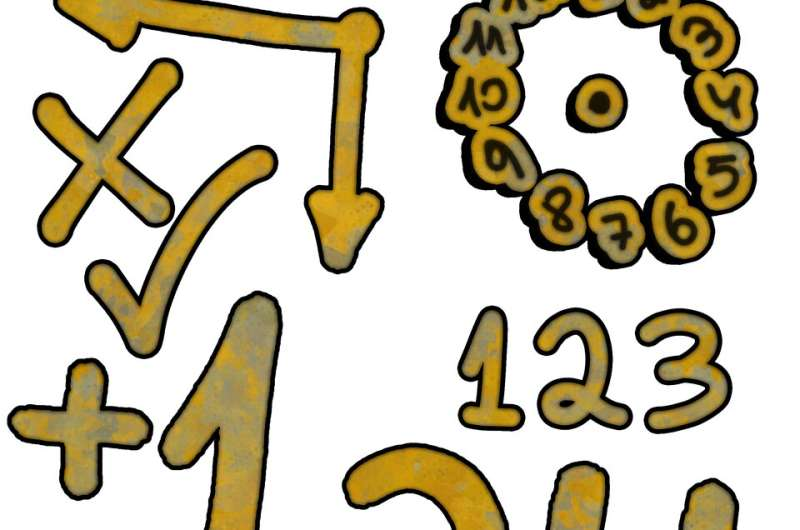Last November, after a decade of failed attempts, David Smith, a self-described shape hobbyist of Bridlington in East Yorkshire, England, suspected that he might have finally solved an open problem in the mathematics of tiling: That is, he thought he might have discovered an “einstein.”
In less poetic terms, an einstein is an “aperiodic monotile,” a shape that tiles a plane, or an infinite two-dimensional flat surface, but only in a nonrepeating pattern. (The term “einstein” comes from the German “ein stein,” or “one stone” — more loosely, “one tile” or “one shape.”) Your typical wallpaper or tiled floor is part of an infinite pattern that repeats periodically; when shifted, or “translated,” the pattern can be exactly superimposed on itself. An aperiodic tiling displays no such “translational symmetry,” and mathematicians have long sought a single shape that could tile the plane in such a fashion. This is known as the einstein problem.
“I’m always messing about and experimenting with shapes,” said Mr. Smith, 64, who worked as a printing technician, among other jobs, and retired early. Although he enjoyed math in high school, he didn’t excel at it, he said. But he has long been “obsessively intrigued” by the einstein problem.
And now a new paper — by Mr. Smith and three co-authors with mathematical and computational expertise — proves Mr. Smith’s discovery true. The researchers called their einstein “the hat,” as it resembles a fedora. (Mr. Smith often sports a bandanna tied around his head.) The paper has not yet been peer reviewed.
“This appears to be a remarkable discovery!” Joshua Socolar, a physicist at Duke University who read an early copy of the paper provided by The New York Times, said in an email. “The most significant aspect for me is that the tiling does not clearly fall into any of the familiar classes of structures that we understand.”
“The mathematical result begs some interesting physics questions,” he added. “One could imagine encountering or fabricating a material with this type of internal structure.” Dr. Socolar and Joan Taylor, an independent researcher in Burnie, Tasmania, previously found a hexagonal monotile made of disconnected pieces, which according to some, stretched the rules. (They also found a connected 3-D version of the Socolar-Taylor tile.)

Initially, mathematical tiling pursuits were motivated by a broad question: Was there a set of shapes that could tile the plane only nonperiodically? In 1961, the mathematician Hao Wang conjectured that such sets were impossible, but his student Robert Berger soon proved the conjecture wrong. Dr. Berger discovered an aperiodic set of 20,426 tiles, and thereafter a set of 104.
Then the game became: How few tiles would do the trick? In the 1970s, Sir Roger Penrose, a mathematical physicist at University of Oxford who won the 2020 Nobel Prize in Physics for his research on black holes, got the number down to two.
Others have since hit upon shapes for two tiles. “I have a pair or two of my own,” said Chaim Goodman-Strauss, another of the paper’s authors, a professor at the University of Arkansas, who also holds the title of outreach mathematician at the National Museum of Mathematics in New York.
Image

He noted that black and white squares also can make weird nonperiodic patterns, in addition to the familiar, periodic checkerboard pattern. “It’s really pretty trivial to be able to make weird and interesting patterns,” he said. The magic of the two Penrose tiles is that they make only nonperiodic patterns — that’s all they can do.
“But then the Holy Grail was, could you do with one — one tile?” Dr. Goodman-Strauss said.
As recently as a few years ago, Sir Roger was in pursuit of an einstein, but he set that exploration aside. “I got the number down to two, and now we have it down to one!” he said of the hat. “It’s a tour de force. I see no reason to disbelieve it.”
The paper provided two proofs, both executed by Joseph Myers, a co-author and a software developer in Cambridge, England. One was a traditional proof, based on a previous method, plus custom code; another deployed a new technique, not computer assisted, devised by Dr. Myers.
2nd Edition of International Research Awards on Mathematics and Optimization Methods
Website Link:https://maths-conferences.sciencefather.com/
Award Nomination: https://x-i.me/XU6E
Instagram: https://www.instagram.com/maths98574/
Website Link:https://maths-conferences.sciencefather.com/
Award Nomination: https://x-i.me/XU6E
Instagram: https://www.instagram.com/maths98574/
Tumblr: https://www.tumblr.com/maths2588
Twitter: https://twitter.com/AnisaAn63544725
Pinterest: https://in.pinterest.com/maxconference20022/
#maths #numericals #algebra #analysis #analysis #mathmatics #numericals #number #complex #graphics #graphs


No comments:
Post a Comment